Study on the Intermediary Mechanism of Organizational Quality Specific Immune to Innovation Performance
DOI: 10.23977/infse.2020.010104 | Downloads: 28 | Views: 3927
Author(s)
Li Bing 1, Liu Qiang 1, Li Xue 1, Tang Shulin 2, Guo Yu 2
Affiliation(s)
1 School of Economics and Management, Liaoning University of Technology, Jinzhou, Liaoning
2 School of Economics and Management, Harbin Engineering University, Heilongjiang, Harbin
Corresponding Author
Li BingABSTRACT
This study studies the mechanism of the impact of organizational quality specific immune on innovation performance, and explores whether dynamic capabilities and knowledge sharing play an intermediary role between the two. Construct a theoretical model based on theoretical analysis. This study refers to the study of relevant scholars, using bootstrap method to conduct empirical analysis on the 264 valid data collected by questionnaire survey, and explores the intermediary mechanism of knowledge sharing and dynamic ability in organization quality specific immune and innovation performance. The analysis results show that: (1) organization quality specific immune has a direct impact on innovation performance; (2) knowledge sharing plays an intermediary role between the two; (3) dynamic capabilities are both between organization quality specific immune and innovation performance Intermediate role.
KEYWORDS
Organizational Quality Specific Immune, Intermediary, Innovation PerformanceCITE THIS PAPER
Li Bing, Liu Qiang, Li Xue, Tang Shulin, Guo Yu, Study on the Intermediary Mechanism of Organizational Quality Specific Immune to Innovation Performance. Information Systems and Economics (2020) 1: 29-41. DOI: http://dx.doi.org/10.23977/infse.2020.010104.
REFERENCES
[1] Xie Y. H., Zhou Y., Zhang Z. P., Guo X. T. (2018) Enterprise's "Nerve and Immune System". Manager, (282), 54-59.
[2] Lv P., Wang Y. H. (2015) Research on tissue immune behaviour and mechanism. Journal of Management, 6(5), 607-614.
[3] Jiang T., Xiong W. (2017) Research on multi-level distributed organization immune response model based on comprehensive perspective. Science Management Research, (14), 239-244.
[4] Tomas M. H., Robert F. H., Gary A. K. (2003) Innovativeness: Its antecedents and impact on business performance. Industrial Marketing Management, 33(5), 429-438.
[5] Yang X. J. (2015) Analysis of the status quo and optimization strategies of performance management of state-owned photovoltaic manufacturing enterprises. Enterprise Reform and Management, (11), 73-74.
[6] Zhang X. D., Wu J. (2016) Can the returned overseas executives promote technological innovation of enterprises. Science and Science and Technology Management, (1), 115-128.
[7] Zhao H. Y., Jiang S. X., Yang C.(2015) Stage evolution of absorptive capacity and enterprise innovation performance——Based on the empirical analysis of Shanghai’s high-tech industry. Foreign Economics and Management, 37(2), 3-17.
[8] Yang H. T., Yang P. X.(2015) The influence of openness, relationship network and knowledge sharing on innovation performance. Industrial Engineering and Management, (2), 68-73.
[9]Lee J. N. (2001) The impact of knowledge sharing,organizational capability andpartnership quality on IS outsourcing success. Information and Management, 8(5), 323-335.
[10] Ruun F., Chen G. Q. (2002) Research on organizational knowledge sharing in implementing mass customization. Journal of Management Engineering, 16(3), 3944.
[11]Tan D. P., Huo G. Q. (2005) Analysis of knowledge transfer and related concepts. Library and Information Service, 49(2), 7-10.
[12]Xu Y., Liu J., Wu J. (2016) Improving supply chain performance through industrystandards use and community socialization: A perspective of standards consortia.International Journal of Physical Distribution Logistics Management, 46(8), 763-782.
[13]Senge P.M. (2004) The leader's new work: Building learning organizations. Sloanmanagement review, 32(1), 439-457.
[14]Ardichvili A., Page V., Wending T. (2003) Motivation and barriers to participation invirtual knowledge-sharing communities of practice. Journal of KnowledgeManagement, 7(1), 64-77.
[15] Lin D. Q. (2005) Theory and Practice of Knowledge Management. Beijing: Electronic Industry Press. 67-78.
[16] Li Z. N., Deng Y., Liu H. Y.(2010) A summary of the domestic and foreign knowledge sharing theory research Tian. Library Science Research, (4), 2-6.
[17] Li J., Hu P., Li H. (2014) Research on the Impact of Human Resource Management Practice on Innovation Performance from the Perspective of Knowledge Sharing. Journal of Xiangtan University (Philosophy and Social Sciences Edition), 38(2), 46- 50.
[18] Fan Z. P., Sun Y. H.(2006) A review of knowledge sharing research. Journal of Management, 3(3), 371-374.
[19] Li Q., Sun R.(2015) Research on social exchange relationship, knowledge sharing and innovative behaviour of enterprise employees. Science and Science and Technology Management, 36(10), 147-157.
[20]Saenz J., Aramburu N. (2009) Knowledge sharing and innovationperformance: A comparison between high-tech and low-tech companies. Journal ofIntellectual Capital, 10(1), 22-36.
[21] Chen T., Wang T. N., Zhu Z. L. (2013) Knowledge distance, environmental uncertainty and knowledge sharing among organizations: an empirical study with moderating effects. Science Research, 31(10), 1532-1540.
[22]Tsai W. (2000) Social capital strategy relatedness and the formation of intra-organizational linkages. Strategic Management Journal, 12(9), 925-939.
[23]Tsai W. (2001) Knowledge transfer in intra organizational networks: Effects of network position and absorptive capacity on business unit innovation and performance. Academy of Management Journal, 44(5), 996-1004.
[24]Josune S., Nekane A., Carlos B. (2012) Knowledge sharing and innovation in Spanish and Colombian high-tech firms [J]. Journal of Knowledge Management, 16(6), 919-933.
[25]Gupta A., Hoopes D., Knott A. (2015) Redesigning routines forreplication. Strategic Management Journal, 36(6), 851-871
[26]Teece D. J. (2016) Dynamic capabilities and entrepreneurialmanagement in large organizations: toward a theory ofthe (entrepreneurial) firm. European Economic Review, 86(7), 202-216
[27]Brauer M., Laamanen T. (2014) Workforce downsizing and firmperformance: An organizational routine perspective.Journal of Management Studies, 51(8), 1311-1333.
[28]Feldman M. S., Pentland B., D'Adderio L. (2016) Beyondroutines as things: Introduction to the special issue onroutine dynamics. Organization Science, 27(3), 505-513.
[29] Si M. Q. S. (2020) Research on the Impact of Endogenous Evolution Mechanism of Organizational Practices on Innovation Performance——Mediation of Dynamic Capability. Future and Development, 44(4), 71-79.
[30] Shi L. P., Liu Q., Wu K. J., Du Z. W. (2013) The mechanism of the consistency of organizational quality specific immune construction elements on quality performance: an empirical analysis based on PP method, fit method and AHP. Industrial Engineering and Management, 18(3), 84-91.
[31] Ma J. (2019) Research on the formation mechanism of quality-specific immunity in equipment manufacturing enterprises. Liaoning University of Technology.
[32]Han Y., Li D. (2015) Effects of intellectual capital on innovative performance. Management Decision, 53(1), 40-56.
[33] Jin X., Chen S. (2015) The effect of knowledge source strategy and dynamic capability on exploratory innovation performance: an empirical study based on knowledge-intensive service companies. Scientific Research Management, 36(2), 32-40.
[34]Teece D. J. (2007) Explicating dynamic capabilities: The nature and micro foundations of sustainable enterprise performance. Strategic Management Journal, 28(13), 1319-1350.
[35]Garud R., Nayyar P. R. (1994) Transformative capacity: Continual structuring by intertemporal technology transfer. Strategic Management Journal, 15(5), 365-385.
[36]Tan J., Peng M. W. (2003) Organizational slack and firm performance during economic transitions: Two studies from an emerging economy. Strategic Management Journal, 24(13), 1249-1263.
| Downloads: | 21422 |
|---|---|
| Visits: | 586979 |
Sponsors, Associates, and Links
-
Accounting, Auditing and Finance

-
Industrial Engineering and Innovation Management
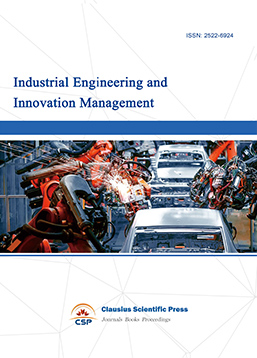
-
Tourism Management and Technology Economy

-
Journal of Computational and Financial Econometrics

-
Financial Engineering and Risk Management

-
Accounting and Corporate Management

-
Social Security and Administration Management

-
Population, Resources & Environmental Economics

-
Statistics & Quantitative Economics

-
Agricultural & Forestry Economics and Management
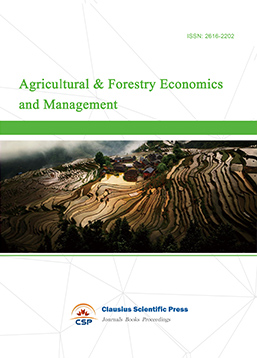
-
Social Medicine and Health Management
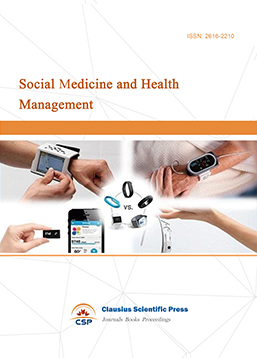
-
Land Resource Management
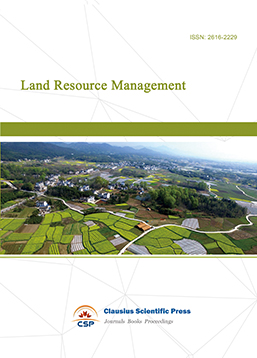
-
Information, Library and Archival Science

-
Journal of Human Resource Development

-
Manufacturing and Service Operations Management
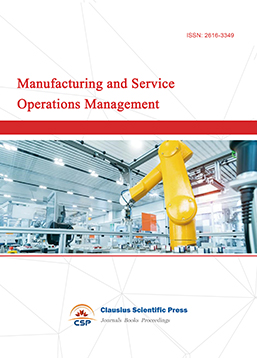
-
Operational Research and Cybernetics


 Download as PDF
Download as PDF